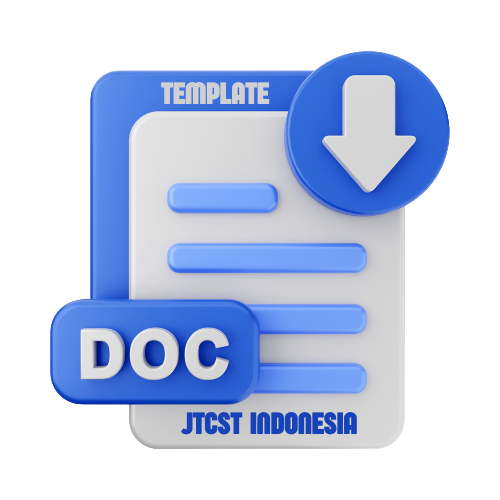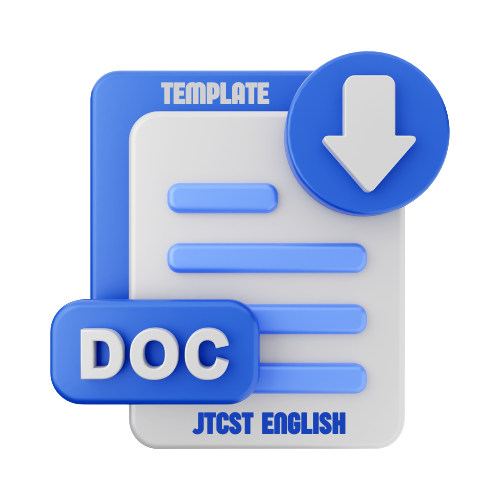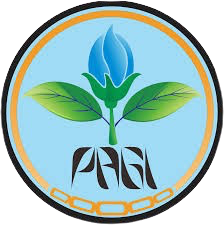The Response of Cocoa Seedling (Theobroma cacao L.) Growth To Vermicompost And Terralyt – Plus Application
DOI:
https://doi.org/10.22219/jtcst.v1i1.7873Keywords:
Vermicompost, Terralyt-plus, CacaoAbstract
The production of Cocoa in Indonesia is still relatively low, reached an average of 532.17 kg ha-¹, while Ivory Coast has reached 1.5 tons ha-¹ in 2013. One of the efforts to support the development of the cocoa plant is a breeding use of organic fertilizers, Vermicompost is an organic fertilizer that has a lot of nutrients and safe for plants and contains many microorganisms that needed land. While of effort to improve the performance of microorganisms in the soil by terralyt-plus. The research was conducted at the experimental farm of the Faculty of Agriculture and Animal Husbandry, University of Muhammadiyah Malang with an altitude of 560 meters above sea level, which held for 3 months. Research compiled using factorial randomized design consisting of two (2) factors. The first factor is vermicompost consists of 3 levels, namely: D0 = 0g/plant; D1 = 200g/plant and D2 = 400g/ plant. The second factor is Terralyt-plus comprises 3 levels: T0 = 0 ml/polybag, T1 = 20 ml/polybag, and T2 = 40 ml/polybag continued BNJ test with a level of 5%. Vermicompost fertilizer dosage of 400g/plant with the addition of Terralyt-plus 40ml / plants is the best treatment in all parameters of the cocoa plant (Theobroma cacao L.). Results from this study are in treatment plant height, a number of leaves and total leaf area were significantly different interactions occur while the stem diameter and the amount of chlorophyll there is no real interaction.
Downloads
References
Aluko OB, and Oyedele DJ, 2005. Influence of organic incorporation on changes in selected soil physical properties during drying of a Nigerian alfisols. J. of Applied Sci. 5:357-362
Badan Pusat Statistik. 2013. Statistik Indonesia. BPS Jakarta.
Direktorat Jenderal Perkebunan. 2011. Statistik Perkebunan Tahun 2009-2011. Pusat Data dan Informasi Pertanian, Kementerian Pertanian. Jakarta.
IITA. 1981. Selected methods for soil and plant analysis, Manual Series No 1, Ibadan, p. 23.
Irmayanti, 2012. Respon Pertumbuhan dan Produksi Tanaman Sawi Hijau Brassica juncea L. Terhadap Variasi Formulasi Nutrisi pada Sistem Aeroponik. Jurusan Biologi. Fakultas Matematika dan Ilmu Pengetahuan Alam. Universitas Hasanuddin. Makassar.
Lakitan, B., 1995. Fisiologi pertumbuhan dan Perkembangan Tanaman, Rajawali Press, Jakarta.
Lukito, A.M., Mulyono, Yulia, T. dan Iswanto, H., 2010. Panduan Lengkap Budidaya Kakao. Agromedia Pustaka, Jakarta.
Munawar, A., 2011. Kesuburan Tanah dan Nutrisi Tanaman. IPB Press. Bogor.
Nasaruddin, 2004. Budidaya Kakao dan Beberapa Aspek Fisiologinya. penelitian pemanfaatan limbah kulit buah kakao sebagai kompos pada pertumbuhan bibit kakao (Theobroma cacao L.) Kultivar upper amazone hybrid. Lembaga Penelitian Universitas Padjadjaran. Bandung.
Purba, I.D., Irsal., dan J. Ginting., 2014. Tanggap Pertumbuhan Vegetatif Bibit Kakao (Theobroma cacao L.) dengan Pemberian Pupuk Kascing dan Air Pada Berbagai Kapasitas lapang. Online Agroteknologi, 2(2): 561-576.
Rekhina, O., 2012. Pengaruh Pemberian Vermikompos Dan Kompos Daun Serta Kombinasinya Terhadap Pertumbuhan Dan Produksi Tanaman Sawi (Barssica juncea ‘Toksakan’). Departemen Biologi. Fakultas Matematika Dan Ilmu Pengetahuan Alam. Universitas Negeri Yogyakarta.
Sinambariba, A., B. Siagian., dan S. Silitonga., 2013. Respons pertumbuhan bibit kakao (Theobroma cacao L.) terhadap pemberian kompos blotong dan pupuk NPKMg pada media subsoil Ultisol. Jurnal Online Agroekologi 1(3): 689-701.
Sintia, M., 2012. Pengaruh beberapa dosis kompos jerami padi dan pupuk nitrogen terhadap pertumbuhan dan hasil jagung manis (Zea mays saccharata Sturt.). Jurnal Tanaman Pangan: 1-7.
Sutedjo, M.M., 2010. Pupuk dan Cara Pemupukan. Rineka Cipta. Jakarta.
Suwarto dan Octavianty, Y., 2010. Budidaya Tanaman Perkebunan Unggul. Penebar Swadaya. Bogor.
Downloads
Published
How to Cite
Issue
Section
License
Copyright (c) 2019 Lambang Eko Mantep Wayuono, Erny Ishartati, Harun Rasyid

This work is licensed under a Creative Commons Attribution-ShareAlike 4.0 International License.
Authors who publish with this journal agree to the following terms:
- Authors retain copyright and grant the journal right of first publication with the work simultaneously licensed under a Creative Commons Attribution License that allows others to share the work with an acknowledgement of the work's authorship and initial publication in this journal.
- Authors are able to enter into separate, additional contractual arrangements for the non-exclusive distribution of the journal's published version of the work (e.g., post it to an institutional repository or publish it in a book), with an acknowledgement of its initial publication in this journal.
- Authors are permitted and encouraged to post their work online (e.g., in institutional repositories or on their website) prior to and during the submission process, as it can lead to productive exchanges, as well as earlier and greater citation of published work (See The Effect of Open Access).











